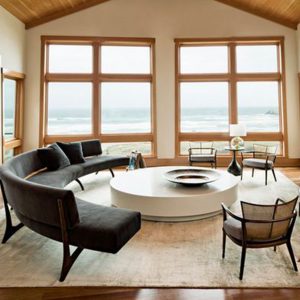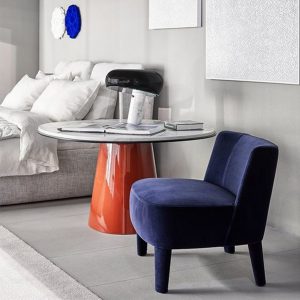Principles of Interior Design

When creating a cozy home, it is crucial to understand basic principles of interior design – balance, harmony, rhythm, contrast, and detail. Professional interior designers know that every interior needs to evaluate the theme and space of a specific project. The designer uses the principles of interior design and understands what is extremely beautiful and what does not go together.
Balance
Symmetrically and proportionally placed objects look simple and make a person feel comfortable and cozy in such a room. Most people define balance as the perfect symmetrical design. However, there are several types of balance: symmetric, asymmetric, and radial. These types provide different balance levels in the room using elements of various sizes, shapes, and masses.
Symmetrical balance in design is created by using similar or identical elements, which are equally spaced from the central axis. The result is a neat, aesthetically pleasing look.

Balance can also be created using asymmetry. This asymmetrical balance is created by using different furniture or accessories on different sides of the room that do not match. However, if the elements have the same visual weight, it creates a very effective asymmetric balance.

Radial symmetry begins at a central point from which objects in the room are arranged in a spiral shape. Radial symmetry can be created using round rugs, curved sofas, or other rounded furniture.

Harmony
Harmony in the room is created using a unifying element. It is a blend of individual parts into a whole, a seamless emotional and functional background. It can be the overall colour of the interior, accessories of a similar style or details on the furniture.

Rhythm
Rhythm is the use of the same element several times in a room. These can be details on the furniture, patterns, colours, and textures, magnified or reduced to create a rhythmic repetition.
Alternatively, the rhythm can be accented with different accessories such as paintings or vases. The layout sequence, changing their size and shape, can help create rhythm in the living space.

Contrast
While it is crucial to maintain harmony and integrity in the interior, it is essential to use a little contrast. This can help highlight specific details in the room and avoid overly neutral interiors and a dull look. Using different colours or shapes can help to create contrast.

Details
One of the essential elements in the interior – details. They usually get the least attention, but observation is necessary everywhere – accessories, flooring, cabinet handles, and even light switches. These details must be chosen correctly, emphasising the theme of the room.

Images: https://www.pinterest.co.uk





